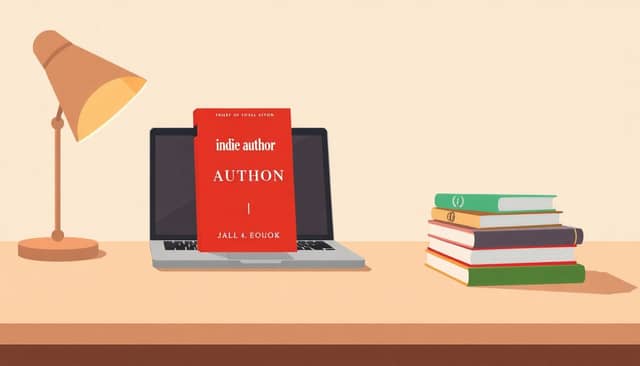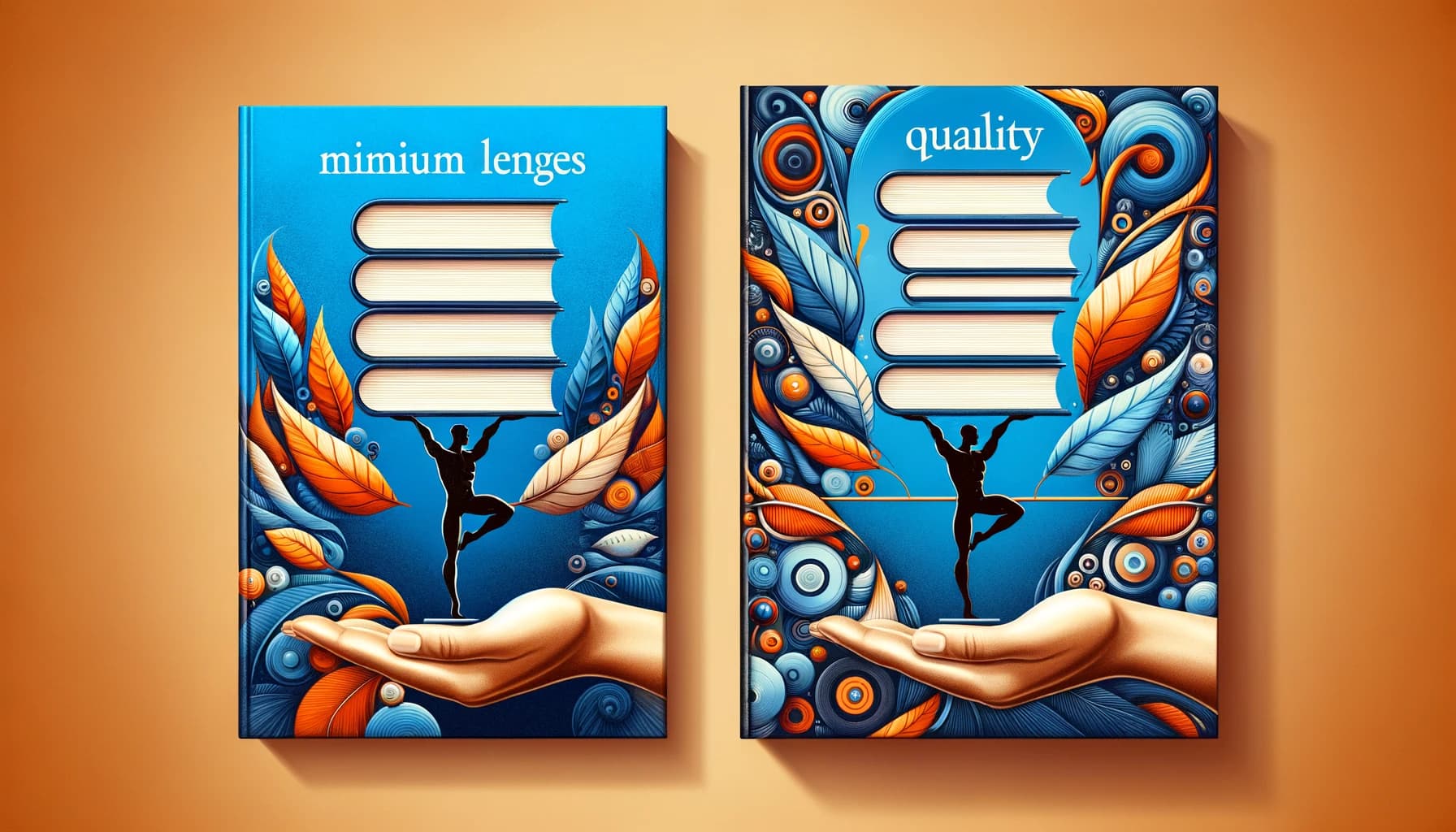Table of Contents
Publishing a book independently can sometimes feel overwhelming—where do you start, what tools do you choose, and how do you make sure your book stands out? Trust me, I’ve been there too. With so many options available, it’s easy to get a little lost.
The good news is, you’re not alone, and this guide has you covered from start to finish. Stick around, and you’ll discover handy platforms to publish your book, helpful tools to polish your work, effective ways to market it, and plenty more tips to boost your success.
Ready to tackle indie publishing without losing your mind? Let’s get right into it!
Key Takeaways
- Choose 2-3 popular publishing platforms (KDP, Smashwords, Draft2Digital) to make your book widely available online and in print.
- Use software like Grammarly, ProWritingAid, Vellum, or Atticus to edit and format your book properly.
- Promote your books via BookBub and smaller services, and build your reader mailing list using MailerLite or ConvertKit.
- Hire a professional book cover designer, or create attractive covers yourself using Canva’s templates.
- Create an author website to share content and gain email subscribers easily.
- Join online indie author groups to find community support and practical advice throughout your publishing journey.

Step 1: Choose the Right Self-Publishing Platforms
If you’re serious about making a splash as an indie author, picking the right self-publishing platform is key—it directly impacts how easily readers can find your book and how much money lands in your pocket. Amazon Kindle Direct Publishing (KDP) is one of the most popular and straightforward platforms, especially considering that more than 50% of Kindle’s Top 400 books in 2023 are from self-published authors.
But don’t limit yourself to just one platform—expand your reach by publishing on multiple channels. Smashwords, for example, distributes books to several eBook retailers like Apple Books, Barnes & Noble, and Kobo, all from one dashboard, extending your audience significantly.
Another solid choice is Draft2Digital, renowned among indie authors for its ease of use. They automatically format your manuscript into various formats, saving you tons of time tinkering with technical details.
For print editions, look into platforms such as IngramSpark and Amazon’s print-on-demand service. IngramSpark offers bookstores access to your printed books—not just online retailers. Remember, the wider availability you have, the greater your discoverability.
My quick tip: choose two to three platforms maximum. Publishing everywhere at once gets overwhelming fast, especially when it comes to maintaining your sales dashboards and promotional strategies.
Step 2: Find Tools for Book Editing and Formatting
Trust me, nothing turns readers off faster than typos and poor formatting. Quality editing is essential if you’re going to give readers the polished experience they expect. If a professional editor is beyond your budget, software tools can rescue your manuscript from embarrassing grammar slips and format mishaps.
Grammarly is an easy-to-use tool, and its premium version gives you suggestions beyond just spelling, checking everything from word choice to sentence clarity. Another great choice is ProWritingAid—it’s more extensive and well-loved by indie authors precisely because it catches style issues and repetitive language.
If you’re searching for alternatives due to cost or features, check out some excellent Grammarly alternatives that offer similar functionalities at various pricing options. You can explore a detailed comparison guide here: alternative writing software for indie authors.
Formatting your manuscript into professional-looking eBooks and print books can be intimidating, but software like Vellum (for Mac users) totally simplifies the task, creating beautiful books in minutes. Atticus is another good option, and unlike Vellum, it works on both Windows and Mac, making it popular among indie authors of all tech ecosystems.
Here’s an actionable tip: Always preview your eBook on an actual device before publishing—this helps catch pesky formatting issues that might otherwise frustrate readers and lead to negative reviews.
Step 3: Use Effective Marketing and Promotion Services
Having an excellent book is just half the battle—promoting it effectively is what helps sell copies and build your readership. One proven service among indie authors is BookBub. While getting featured can be competitive and pricey, it’s one of the fastest ways to spike your sales and downloads because their subscriber lists are massive and highly targeted.
Don’t underestimate the power of promotional stacking, either. Combine deals on BookBub with other, smaller promotional services like Freebooksy, Bargain Booksy, or Fussy Librarian to amplify results. Timing your promotions together within a short burst—say 3-4 days—can significantly boost your Amazon ranking and visibility.
Email marketing still offers the highest ROI, so setting up your own mailing list is crucial. Use tools like MailerLite, ConvertKit, or Mailchimp—they’re beginner-friendly and most offer free plans to start. Think of your mailing list as direct line of communication to your faithful readers—you can announce new releases, promotions, or giveaways without depending on social media algorithms.
If you’re nervous about putting yourself out there or unsure where to even start with marketing, check out resources on how to promote your book effectively without needing expensive ads or having traditional agent representation. Here’s a helpful guide on how to get a book published without relying on an agent, filled with practical tips indie authors swear by.

Step 4: Consider Professional Cover Design Providers
Honestly, judging a book by its cover is exactly what readers do—so don’t skimp on this step.
Your cover is the very first impression people get of your book, either enticing them to click or pushing them to pass.
If you have some budget, invest in professional book cover designers found on marketplaces like 99designs, Fiverr, or Reedsy.
If you’re trying to DIY and save cash, Canva can get the job done surprisingly well, especially with tons of ready-made templates for book covers.
Keep your target genre in mind when designing your cover—the visuals and typography should match reader expectations to attract the right readers.
Not sure what fonts to pick? Check out this easy guide to the best fonts for book covers to fine-tune your design and grab attention.
Step 5: Utilize Author Websites and Mailing List Resources
Your author website is like your home base on the internet—it’s yours alone, and it lets readers learn more about you and your books without distractions.
You don’t need a complicated setup; using a user-friendly platform like WordPress, Wix, or Squarespace helps you create a polished site quickly, even without tech skills.
Include pages like your books, author bio, announcements for new releases, and, most importantly, email list signup.
Email marketing seriously beats social media when staying in touch with your fans, announcing new books, and driving sales.
MailerLite or ConvertKit both have good free plans to help get your mailing list started without overwhelming your budget.
Offer something enticing to persuade readers to sign up—maybe a free short story, bonus chapter, or a set of exclusive realistic fiction writing prompts they won’t find anywhere else.
Step 6: Submit Your Book to Indie Author Awards and Contests
Winning—or even placing—in an indie book award can significantly boost your credibility and visibility.
Awards like the IndieReader Discovery Awards, Readers’ Favorite Awards, or Next Generation Indie Book Awards are well-known and reputable.
Just getting shortlisted or getting silver or bronze mentions allows you to put award badges on your cover and website, instantly signaling quality to potential readers.
Check entry requirements, deadlines, and submission fees carefully; it’s often worth the investment if your book wins recognition.
Be strategic when submitting: choose contests specifically targeted at your genre to maximize your chances of success.
Step 7: Apply Affordable AI Tools for Indie Authors
AI tools aren’t scary robots from sci-fi—they’re practical, affordable ways to polish and streamline the writing and publishing process.
Try AI writing assistants like Sudowrite or Jasper AI when you’re stuck creatively—they give you suggestions or rephrase tricky paragraphs in seconds.
Using AI-powered proofreading tools such as ProWritingAid or Grammarly will save hours of editing, catching issues your tired eyes missed.
Want to try a different writing style to sharpen your storytelling? Check out generators or tools dedicated to specific genres, like this horror story plot guide.
Remember, always review and customize whatever AI tools suggest; they’re here to help you, not replace your author judgment.
Step 8: Join Indie Author Communities for Ongoing Support
Seriously, indie author life can quickly get lonely—don’t do this writing and publishing journey all alone.
Online communities like Facebook groups (e.g. 20Booksto50K, Wide for the Win), Reddit forums (r/selfpublish), or indie-dedicated Discord servers connect you with thousands of other authors navigating the same struggles you face.
Joining groups means learning from experienced authors, sharing resources, troubleshooting common issues, and even forming collaborations for joint promotions.
Be active within your chosen groups—ask questions honestly, and make sure you contribute and help others too.
Finding supportive author buddies will make your writing journey a lot smoother and frankly much more fun.
Step 9: Access Educational Resources to Improve Your Author Skills
To keep your indie author career thriving, continuous learning is crucial.
You don’t need expensive courses when there are so many accessible and affordable resources such as YouTube tutorials (channels like Kindlepreneur), free podcasts (The Creative Penn, Sell More Books Show), and books about writing craft and publishing.
Master the fundamentals—storytelling structures, character arcs, and dialogue—then experiment with specific forms.
For example, challenge yourself to learn something unique, such as how to write a one-act play, to grow your storytelling muscles beyond prose.
Invest in books that teach those skills through practical advice—titles like “Save the Cat! Writes a Novel” or “On Writing” by Stephen King are consistent favorites among indie authors.
Step 10: Track Sales and Reviews With Useful Analytics Tools
Publishing your book isn’t the finish line. Tracking how your books perform is essential to maintain momentum and plan better releases in the future.
Start simple—using sales dashboards provided by Amazon KDP, Draft2Digital, and other publishing platforms you’ve chosen.
To centralize sales results from different platforms, check out tools like ReaderLinks or BookReport that gather data and present it simply and clearly.
Also, regularly scan your Amazon and Goodreads reviews, responding professionally—never defensively—to valuable reader feedback.
Make it a habit to note trends in reviews; if readers repeatedly mention issues, use their feedback constructively to improve future releases.
FAQs
Popular platforms include Amazon Kindle Direct Publishing (KDP), Draft2Digital, Smashwords, and Barnes & Noble Press. These sites enable indie authors to easily publish ebooks and print books, retaining extensive control over publication times, pricing, royalties, and distribution.
Effective methods include engaging readers through social media, organizing book giveaways, offering discounted promotions, getting reviewed by prominent bloggers, using paid advertising, participating in author interviews or podcasts, and building mailing lists of dedicated readers.
A professionally designed book cover grabs readers’ attention and accurately reflects the book’s content and genre. Attractive covers can significantly boost sales, establish credibility, encourage positive reviews, and help authors effectively compete with traditionally published titles.
Indie authors frequently use analytics tools like Amazon Author Central, Book Report, KDP Sales Dashboard, and ReaderLinks. These services provide detailed tracking of sales performance, royalties, reader demographics, and reviews, helping authors adjust their marketing plans effectively.



